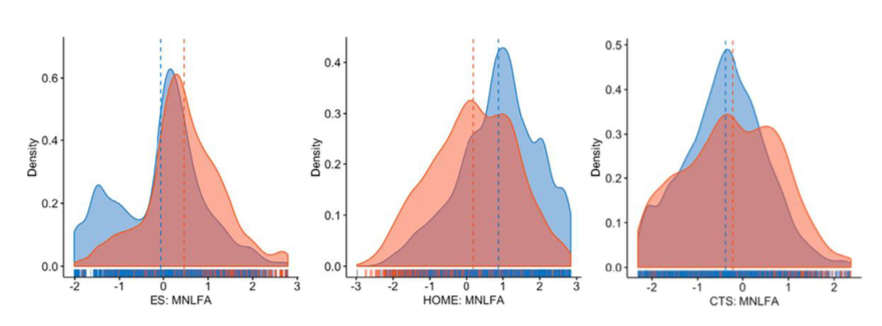Capturing Environmental Dimensions of Adversity and Resources in the Context of Poverty Across Infancy Through Early Adolescence: A Moderated Nonlinear Factor Model.
Abstract
Income, education, and cumulative-risk indices likely obscure meaningful heterogeneity in the mechanisms through which poverty impacts child outcomes. This study draws from contemporary theory to specify multiple dimensions of poverty-related adversity and resources, with the aim of better capturing these nuances. Using data from the Family Life Project (N = 1,292), we leveraged moderated nonlinear factor analysis (Bauer, 2017) to establish group- and longitudinally invariant environmental measures from infancy to early adolescence. Results indicated three latent factors—material deprivation, psychosocial threat, and sociocognitive resources—were distinct from each other and from family income. Each was largely invariant across site, racial group, and development and showed convergent and discriminant relations with age-twelve criterion measures. Implications for ensuring socioculturally valid measurements of poverty are discussed.
 |
My first first-authored paper is out in #ChildDevelopment! We draw from contemporary theory & recent advances in latent variable modeling to develop more nuanced representations of the constraints & supports experienced by low-income children. A 🧵... https://t.co/5jFFqnIZuu
— Meriah DeJoseph (@meriahdejoseph) January 10, 2021